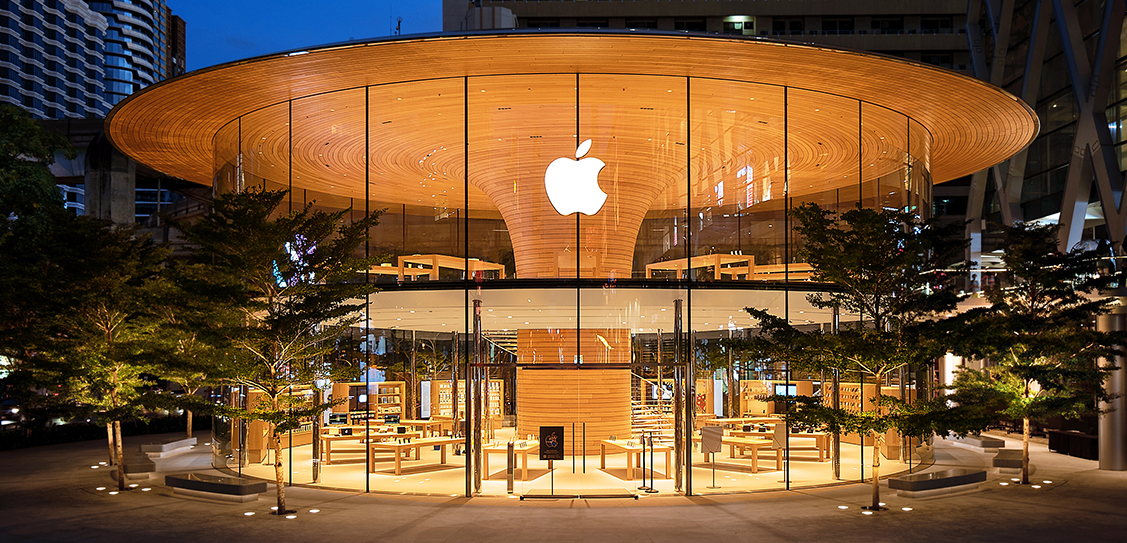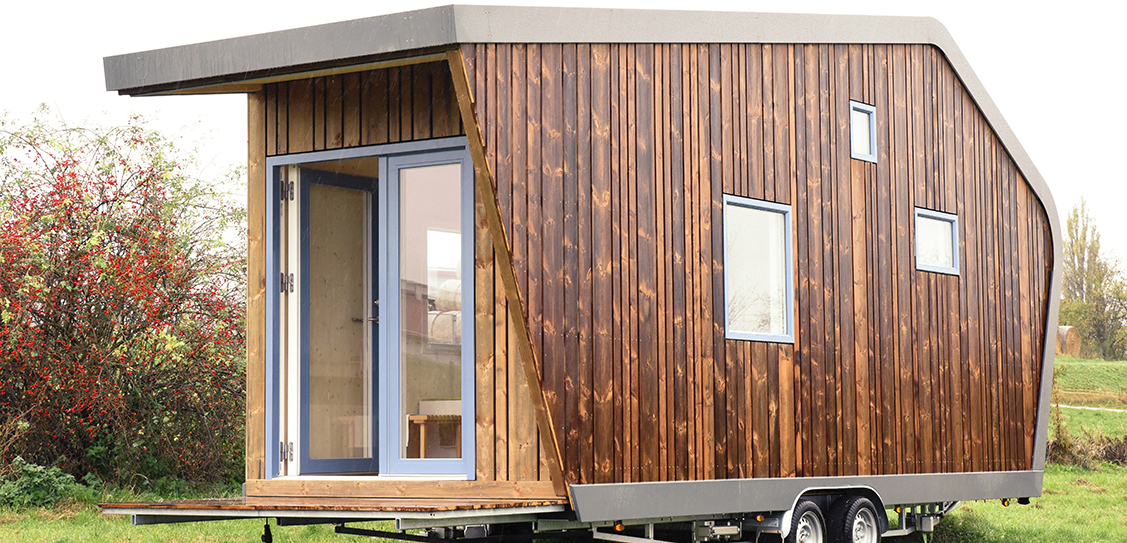Foster + Partners open Apple Central World in Bangkok
Clad in warm timber, the central support is formed of 1,461 European white oak profiles. The oak timber is split into individual lamellas and bonded onto a spruce core for stability. A carefully crafted edge detail on each slat allows air to be extracted out through the central structure with an absorptive acoustic backing layer.
Connecting the two main sales areas on the two levels is a beautifully crafted staircase with helical turbine blades that cantilever from the central structure. Each tread is milled from solid blocks of stainless steel and is highly polished, giving them a reflective, sculptural quality. The fully glazed drum surrounding both floors provides dramatic 360-degree views, juxtaposing the intense urbanism with the quiet greenery of the new landscape.
Grounded at its centre, the circular roof projects out 10 ft to provide shade to the glazed façade. Blurring the boundaries between the inside and the outside, the glazed façade becomes dematerialised to reveal the calm interiors of the store. With the same quality of surface finishes on the inside and the outside, the design establishes a generous new public space for the city, surrounded by a ring of trees interspersed with external benches for people to rest and enjoy the green setting.
The project is the result of a collaboration between Apple, Foster + Partners and Architects 49 Ltd
Scott Brownrigg’s modernist glass mansion in London’s Mayfair
Inspired by La Maison de Verre in Paris, Brownrigg’s project is located within a quiet mews street adjacent to Green Park in London, created through the redevelopment of the former annex building to the Cavalry and Guards club.
The Glass Mansion provides in total 13,583 sq ft of luxurious living space across four levels with an additional three basement levels that include a cinema, private spa and swimming pool. There is also a spacious four-car garage and 226 sq ft garden patio at ground level together with a 1,251 sq ft roof garden.
Two translucent, glowing forms amongst the dense and complex urban context identify the buildings. Light and privacy are balanced through the optimal use of the solar orientation of the site to all habitable rooms via translucent panels and clear openings. New interaction has been created between the street and the mews, and the new buildings will be ‘viewed as light at the end of the tunnel’. The composition of the façade is an interpretation of Japanese sliding screens made of either white translucent paper, which provides light, warmth and intimacy (the shoji), or opaque paper for privacy and interaction between the outside and the inside (the fusuma).
Tungestølen: Snøhetta’s constellation of pentagonal tourist cabins for Norwegian hikers
Situated in Luster in the western part of Norway on a small plateau overlooking the famous Jostedalen glacier, Snøhetta’s project delights walkers.
Designed as an architectural reaction to the changing weather conditions of this mountainous site, the distinct cabins offer visitors a comfortable and generous shelter during the summer and autumn months when the cabin is open to the public.
Snøhetta designed a new constellation of nine robust pentagonal and oblique cabins, made with wooden glue-lam frames, covered by sheets of CLT and clad in ore pine. The outward-facing walls of the cabins have been given a beak-like shape to slow down strong winds sweeping up from the valley floor. Inside, the playful shape of the cabins frames the mountains and valleys outside through angular and panoramic windows, adding views and light to the spaces while encouraging individual contemplation and respite.
Foster + Partners reimagine China’s first Apple store
Relocating to a more prominent Beijing site adjacent to its predecessor, Apple Sanlitun seeks to link with surrounding pedestrian streets and large open squares that is a social focus for the district.
The store is protected by a large overhanging roof providing shelter from the heavy rain and intense summer sun. The 390 sq m of integrated rooftop photovoltaic panels partially offset the energy consumption of the store and a bespoke integrated ceiling system houses ventilation, cooling, fire protection equipment and lighting equipment. Additional energy saving measures include advanced façade design, optimised air conditioning and efficient lighting systems.
Apple Sanlitun also features a unique structural system that has been used for the first time in China, a Special Truss Moment Frame is designed to effectively resist seismic forces, while allowing large column free interior spaces. Tuned mass dampers reduce excessive vibration in the cantilevered upper level and Buckling Restrained Braced Frames minimise the structural impact on the existing basement.
Germany’s ‘Tiny Houses’ pioneering sustainable minimalism
A new, innovative housing model, ‘Tiny Houses’ by KOOP Architekten & Ingenieure, has been created, offering sustainable, mobile and affordable living as the trend for minimalist design and flexible living grows globally.
The homes, which range from 18 to 23 sq m, provide the key essentials including a bathroom, heating system and electrical power supply, and have been designed to encourage people to comfortably live more simply, sustainably and efficiently.
The Tiny Houses also respond directly to those in need of affordable accommodation, particularly as the housing becomes even scarcer and more expensive. The mobility of the homes has also proved to be very attractive to buyers looking for holiday homes which can be transported simply by car trailer, providing further flexibility to owners looking to travel both domestically and internationally.



